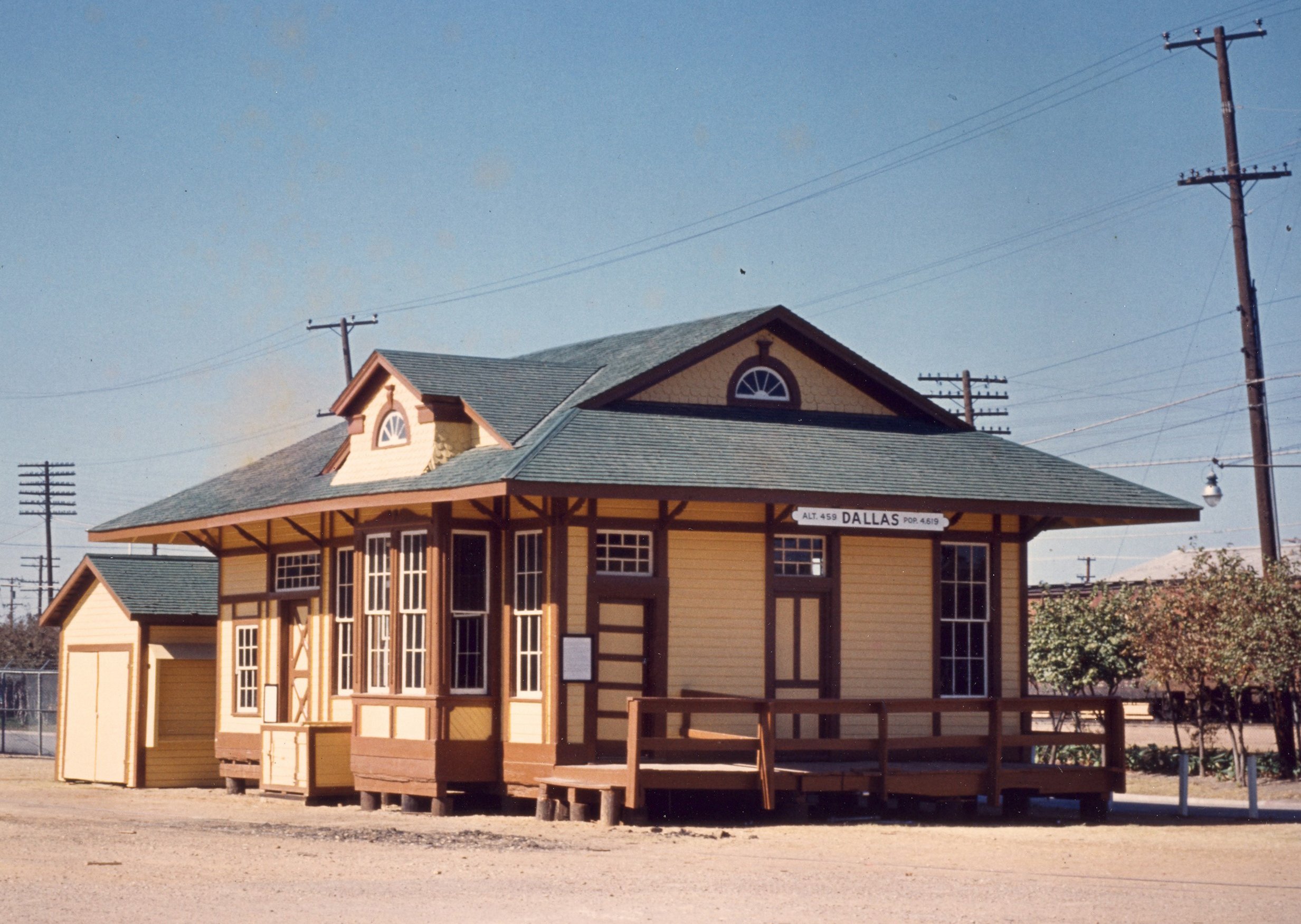July 16, 2022 Marks the 150th Anniversary of the First Train Arriving in Dallas
Amid all the hustle and bustle in Dallas during these hot summer days, the city is about to mark an important anniversary of one of the most significant events in its history.
Exactly 150 years ago, on July 16, 1872, a ceremonial train arrived in Dallas, marking completion of the first major rail line in Texas. Following two years of construction and several delays, the Houston & Texas Central Railroad (H&TC) had successfully reached the ambitious young town from Houston. The first trip took 15 hours. Following the train’s arrival, the city’s 5,000 cheering citizens were treated to a barbecue luncheon.
This single event set Dallas on a growth trajectory like no other city in North Texas. The arrival of the railroad and its progression north, along with skillful maneuvering by civic leaders for an east-west line a year later, ensured the success that Dallas enjoys today. Their names are inscribed in the city’s history – names like John Neely Bryan and William H. Gaston. The latter gave $5,000 and donated right-of-way to entice the H&TC to pass directly through Dallas.
This photograph (circa 1885) is one of the earliest views of railroads in Dallas. The caption reads, "Dallas News Special, George Bannerman Dealey standing on platform of first car." Dealey managed the Dallas Morning News, which was delivered by train to communities along the H&TC north of Dallas. Earlier photos of railroads in Dallas are extremely rare. This image is courtesy of the DeGolyer Library, SMU Special Collections.
Dallas, a largely agrarian community on the isolated Texas prairie would become the largest transportation hub without a major river or seaport in the Southwest. Dallas’ population more than tripled within ten years of the first train. Merchants who had traveled with the progression of the railroad from Houston settled in Dallas. They established businesses that became household names, selling fine clothing and housewares that set Dallas apart from other towns on the Texas prairie.
As rail lines expanded, this story would play out in countless cities and towns across North Texas. But Dallas would experience the most growth and have the greatest impact as a crossroads of commerce and culture in the region.
By 1900, the population would swell to nearly 43,000. Local cotton and grain were shipped by rail to destinations nationwide, while manufactured goods were brought in to satisfy an increasingly cosmopolitan city. Famous passenger trains like the Sunshine Special and the Katy Flier whisked travelers in and out of Dallas.
By 1910, Dallas had five train stations that punctuated tracks throughout the city. Railroads, the very source of its prosperity, were beginning to strangle growth. In 1916, they were consolidated into one Union Terminal. Situated along the banks of the Trinity River, the station greatly helped alleviate congestion. Dubbed the “Gem of the Southwest,” it served as the front door to Dallas, and facilitated travel to anywhere.
Today, Dallas’ central business district is ringed by freeways named after former mayors, and other modes of transportation have become essential to the heartbeat of the city. While some tracks have been pulled up, two of the nation’s largest railroads still serve Dallas along with Amtrak and commuter lines.
The railroads and the influencers that preceded today’s freeways and airports are to be celebrated on this 150th anniversary of the first train to Dallas. During that period, towns literally flourished or died by the routing of the railroad. Dallas is truly a success story!
The Museum of the American Railroad is proud to join with Mayor Eric Johnson’s office to proclaim July 16 as Railroad Day in Dallas.
Evidence of Dallas' Earliest Railroad Days
One of the oldest surviving railroad structures in Texas is the Museum's Houston & Texas Central (H&TC) Depot. Now located in Frisco, it was constructed circa 1900 and was located in downtown Dallas at one or more sites. The structure spent most of its life as a Yard Office on Eakin Street (now I-30) at the entrance to Southern Pacific's Dallas Yard. While configured as a Depot, it may or may not have actually served passengers. Records of its early years are sketchy and have been the subject of much research. It most likely replaced an earlier crude structure that was built when the H&TC reached Dallas in 1872. ICC valuation records indicate it was a Yard Office as early as 1918. The structure survived an attic fire in 1922 due to a faulty coal stove flue. The Depot was purchased by the State Fair of Texas and moved to Fair Park in 1963. Ownership was conveyed to the Museum in the 1990s and it was moved to Frisco in 2012. The above view was taken just prior to the opening of the 1963 State Fair of Texas. The Depot was moved in August of that year and renovated for the debut of the "Age of Steam" exhibit.
Founded in 1962, the Museum of the American Railroad is a not-for-profit corporation in Frisco, Texas dedicated to celebrating the heritage and exploring the future of railroads through historic preservation, research, and educational programming. The museum collects artifacts and archival material from the railroad industry to exhibit and interpret their significance in American life and culture. Exhibits and general programs are provided year-round. Educational programs are available to local schools and universities through study trips, in-class programming & outreach, and online resources.




